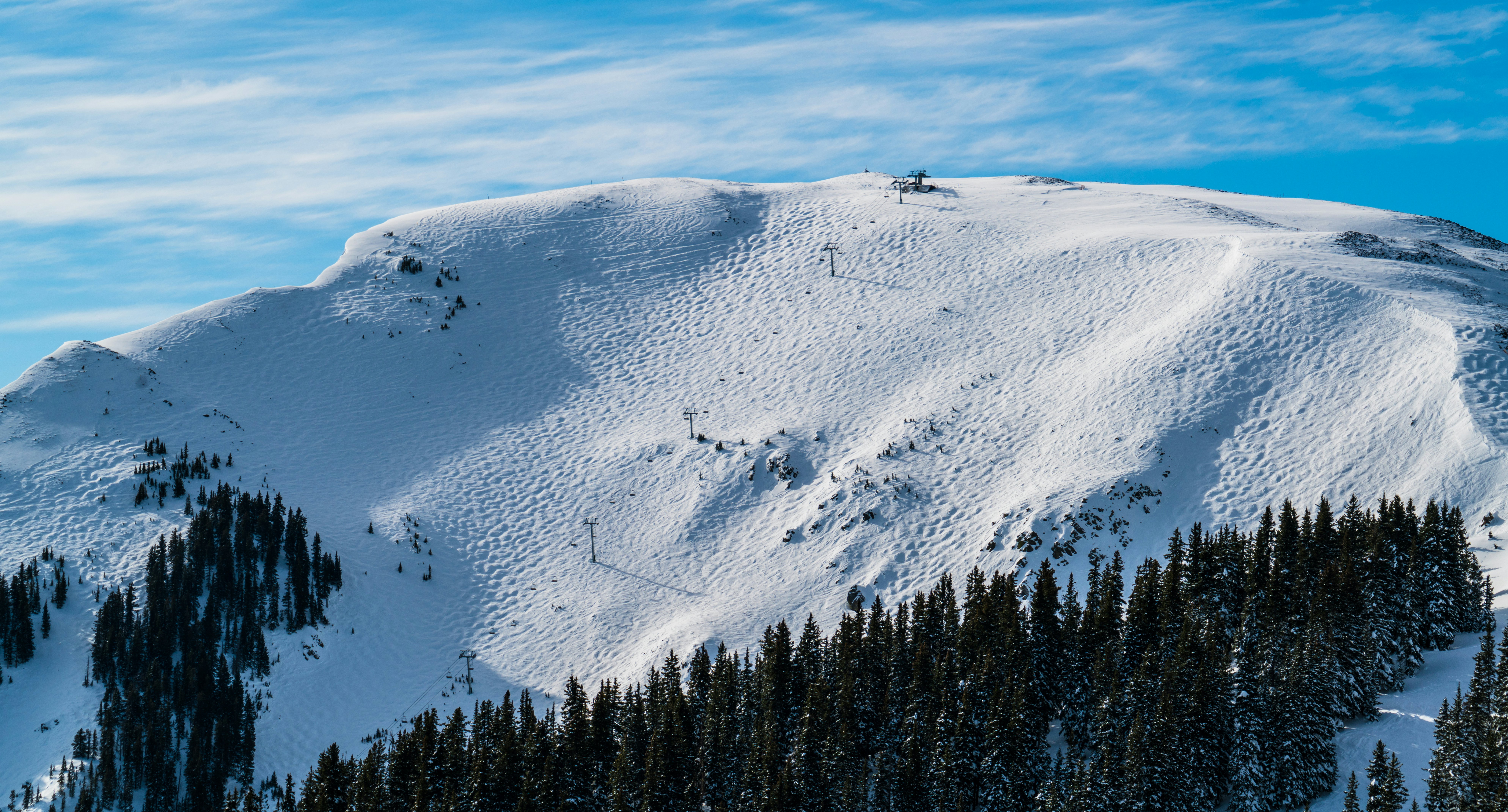
The 30 best countries, cities and regions to visit in 2025

Jan 31, 2025 • 8 min read

Sandia Ski Resort and the Sangre de Christo Mountains in New Mexico. Kyle Sawatzke and Antonio Cassidy via Sandia Ski Resort
New Mexico may just be the Rocky Mountains’ best-kept secret – in terms of skiing, at the very least.
With 300-plus bluebird days, over 200 inches of snow annually and dry, ultra-light powder that rivals celebrated ski destinations in neighboring states, the Land of Enchantment delivers major winter adventure – without big crowds or lift ticket prices. A bonus: most of the state’s ski areas are easily accessible from its vibrant cities, inviting you to mix the business of sending it with the pleasures of one-of-a-kind art, culture, and food scenes.
Here are four of New Mexico’s best ski resorts to explore this winter.

Vibes: is New Mexico’s largest, most revered resort. Rugged Rocky Mountain terrain and top-tier glade skiing draw thrill seekers – but the real magic lies in Taos’ palpable stoke. People here are down to earth, supportive and genuinely happy to just be outdoors.
Who’s it for: With over half its 110 runs rated black or double black, a 3131ft (955m) vertical drop and famed off-piste opportunities, Taos is a mecca for advanced skiers. And thanks to the top-rated , it’s also welcoming for beginners. A terrain park, stellar dry snow, no crowds and shockingly affordable lift tickets balance things out even more.
What to do when you’re not on the slopes: Soak in one of the area’s abundant natural hot springs. Luxe has private and communal spring pools, plus a deservedly popular mud pool.
Where to après: Refuel with massive steins of German beer and soft pretzels at . Hit Swiss fondue dinner on Thursdays, or book a snowcat-powered sleigh ride and prix-fixe dinner.
Where to stay: Impeccable service is ’s trademark. Its prime location just steps from Lift 1, Northern Italian–inspired 192 at The Blake restaurant, and onsite spa are cherries on top.
Where to rent equipment: On-mountain offers a vast range of new, top-notch gear, and chooses sustainable brands. Ski Valley has four other , with high-end Le Ski Mastery a major highlight.
Pass and tickets: Taos is on the and , plus offers a half-dozen of its own . Lift tickets range from $80–195, and skiers under 6 or over 80 ski free.
Getting there and around: flies into Taos from southern California, Austin, Dallas and Denver. From there, rent a vehicle or . Resort guests can take the free . The “Blue Bus” () provides free winter service to Ski Valley from several places in town. Albuquerque International Sunport (three hours) and Santa Fe Regional Airport (two hours) offer far more flights.


VIbes: Tucked away in the Sangre de Cristo Mountains, 45 minutes from Taos, has non-existent lift lines and an après scene that’s more about cozy fireside conversation than nightlife. Unless you choose to hit the slopes after sunset, that is: this is the only resort in New Mexico offering night skiing.
Who’s it for: Billing itself as “Your family’s first resort,” Angel Fire is ideal for families and beginners. The resort hosts weekend s’mores, plus tubing and sledding hills; skiing icon Robin May heads up the well-respected ski school. Yet since only 21% of runs are green, experienced skiers will find challenges, too.
What to do when you’re not on the slopes: show off the scenic on horseback or from the comfort of a horse-drawn sleigh.
Where to après: Nosh on tacos and margaritas by the fire at Mexican-food hotspot . Don’t miss the churro donuts.
Where to stay: Angel Fire Resort offers (some pet-friendly), condos and private homes, as well as an upscale . The lodge sits at the base of the mountain, within walking distance to restaurants and shops.
Where to rent equipment: Winter Sports and Slopeside Rental Shop, both at the resort, by the half- or full day.
Pass and tickets: are $120 per day. Angel Fire is part of the Powder Alliance, so season-pass holders get three free days at .
Getting there and around: Most people drive from ABQ or Santa Fe. If you fly into Taos, rent a vehicle or book a shuttle to Angel Fire with . The resort also offers a complimentary, reservation-only airport shuttle for guests.

VIbes: Criminally underrated sits high in the southern Rockies. Really high: its base elevation is 10,350ft (3155m). Known for dry, feather-light snow; a mix of groomed runs and glade skiing; inexpensive lift tickets; and limited amenities, it’s all about big mountain fun with a small-resort feel.
Who’s it for: Eighty-seven runs and a 1725ft (525m) vertical deliver everything from beginner-friendly groomers to acclaimed glades, moguls and terrain parks. There’s no on-mountain lodging, so while you won’t find a resort experience here, it’s ideal for those who like the idea of exploring Santa Fe in the evenings.
What to do when you’re not on the slopes: Explore the original Meow Wolf, an incredible immersive art experience, and visit the adobe San Miguel Chapel, believed to be the oldest church in the USA.
Where to après: The cozy aesthetic and wildly popular fondue at will make you feel like you’re still on the mountain. As a bonus, it’s right next to San Miguel Chapel.
Where to stay: Although there’s no accommodation on the mountain, Ski Santa Fe . checks all the boxes, with an unbeatable location, gorgeous adobe architecture, and onsite restaurant and lounge.
Where to rent equipment: You can rent the basics on the mountain, but for better selection and availability, go to or in town.
Pass and tickets: Santa Fe’s and are super affordable – around $100 for a full day. And there’s an even lower-priced beginner lift ticket.
Getting there and around: Ski Santa Fe is 16 miles (25¾km) and 40 minutes from the city. The same bus service that serves Taos, the “Blue Bus,” also runs a free route here. The operates 365 days a year; as a nice perk, riders get a $5 discount on the mountain.


VIbes: Honoring its roots as New Mexico’s first ski area, no-frills feels like traveling back to a time when skiing out West was affordable – and purely about skiing. It’s the type of place where you’ll likely bump into neighbors or coworkers, and staff knows regulars by name.
Who’s it for: About 30 to 45 minutes from the city, Sandia Peak is a local go-to, with lift tickets starting at $19 (yes, really) and free skiing for kids. While you won’t find much challenging terrain, the mountain has several long runs for intermediate powder hounds.
What to do when you’re not on the slopes: Albuquerque is the “Hot Air Balloon Capital of the World” and winter provides ideal conditions for taking to the sky. Book with or 365 days a year.
Where to après: Quintessential dive bar is at the base of the mountain, with pool tables and live music. Prefer something upscale and sans kids? sits at the top of the Sandia Peak Tramway (10,300ft / 3140m), and requires reservations for both dining and the tram.
Where to stay: Walk to vibrant Old Town and curl up by a private kiva fireplace at .
Where to rent equipment: The onsite rents skis, snowboards, boots and poles. In town, rents full gear packages, along with accessories like gloves and jackets.
Pass and tickets: range from $19 to $40. Sandia Peak is on the , offering unlimited skiing at and , plus limited days on several other mountains. Local? Check out the flexible Sandia Peak Weekday Pass. Kids under 12 always ski free.
Getting there and around: Just 30 miles (48km) northeast of ABQ, Sandia Peak is a short, scenic drive. Locals who have their own gear can also ride the Sandia Peak Tramway from the city to the top of the mountain.
New Mexico’s sunny, arid climate and high-elevation ski areas means sun protection and layering are musts, even on the coldest days. Temperatures can swing significantly as the sun moves throughout the day, so start with a solid, moisture-wicking base layer, the add a middle layer like a packable puffy or fleece jacket or vest. Top those with waterproof ski pants or a bib, along with a shell jacket. Even if you’re a first-timer – especially if you’re a first-timer – don’t ski in jeans or sweats, for you’ll be wet, freezing and miserable within an hour. Along those lines, a quality pair of waterproof gloves is also essential, and a wind-blocking neck gaiter is nice to have. You can rent skis or a board, boots, poles and helmets at most resorts so you don’t have to pack much bulky gear – but do reserve equipment ahead of time to ensure availability.
Hydrate and acclimate. It’s easy to underestimate elevation and terrain in New Mexico, but keep in mind that some of the state’s ski resorts sit at nearly 13,000ft (3962m). Drink lots of water. Build in downtime to rest. And, if possible, spend a day acclimating before you hit the slopes.
Know the signs of altitude sickness. If you experience severe headaches, fatigue, nausea or dizziness, head to a lower elevation as soon as possible and take it easy the rest of the day.
Timing matters. With its abundant sunshine and lack of humidity, ski season is fairly short here. January through March usually brings the most optimal conditions, although you may catch an occasional early- or late-season powder dump.
Don’t overlook SPF. With some 300 days of sunshine and high-altitude UV exposure, sunscreen and goggles or sunglasses are essential. You absolutely can get a sunburn in the snow.
Book rental gear early. With a relatively limited number of options statewide, rental shops often book all their gear out on weekends and holidays. Make reservations online as far in advance as possible to avoid last-minute scrambling.